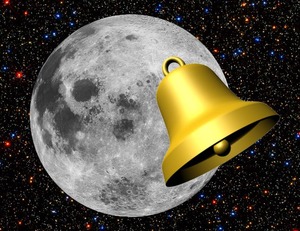The purpose of this email is to help everyone sharpen their vision. Please print and share.
Happy Birthday shout-out to Shelli in SF - one year older and a lightyear wiser.
 I'm having an ongoing debate with a good friend. Perhaps you (and those at your table) can help us resolve it.
I'm having an ongoing debate with a good friend. Perhaps you (and those at your table) can help us resolve it.
If you try stargazing in or near any city, you're only going to see about fifty stars, one percent of what ought to be visible without a telescope. If you try - once a year, perhaps - to "get away from it all" - somewhere at least 30 miles from the nearest city, you will be see the missing ninety-nine percent.
First question to resolve: It takes a lot of effort to get to such a remote place, and there are many benefits; would it be worth it just to see the stars?
Now, if you are unable to get away just now, but you happen to have a small (30 power) telescope or binoculars (with a tripod), and a clear night tonight, look south around 10 pm.
That bright star about 40° up from the horizon is Saturn. The other bright star to the SW is Jupiter.
Get your scope focused on Jupiter (again, this only works with a tripod). You should see 3 or 4 tiny dots of light near it. You are witnessing what Galileo discovered with his 20x telescope in 1609.
Question for your table - what are those dots of light?
Yes, they are the four largest of Jupiter's moons.
(Note - Galileo didn't give them their the famous and rather immodest names of Io, Europa, Ganymede, and Callisto: that was Simon Marius, who independently discovered them (and he and Galileo accused each other of plagiarism...), and the names didn't catch on until the 20th Century.)
(Bonus question - how many moons does Jupiter have? [79])
Now let's turn our scope to Saturn. You should be able to see its rings, albeit a bit fuzzy.
(Bonus question - how many moons does Saturn have? [62])
BTW, at their closest to us, Jupiter is about 365 million miles and Saturn about 750 million miles. That means that we can see the rings because sunlight travels 890 million miles to Saturn, bounces off the rings and then returns 750 million miles, a total round trip of more than 2 hours.
Sorry for all the "science" but this is all leading to today's final question:
Is it cool and beautiful to see the moons of Jupiter and rings of Saturn with your own eyes, or is it just as well to look at much more stunning Hubble or Voyager photos?
Shabbat Shalom
Enjoyed this Table Talk? Vote with your fingers! Like it, tweet it, forward it....
Happy Birthday shout-out to Shelli in SF - one year older and a lightyear wiser.
 I'm having an ongoing debate with a good friend. Perhaps you (and those at your table) can help us resolve it.
I'm having an ongoing debate with a good friend. Perhaps you (and those at your table) can help us resolve it.If you try stargazing in or near any city, you're only going to see about fifty stars, one percent of what ought to be visible without a telescope. If you try - once a year, perhaps - to "get away from it all" - somewhere at least 30 miles from the nearest city, you will be see the missing ninety-nine percent.
First question to resolve: It takes a lot of effort to get to such a remote place, and there are many benefits; would it be worth it just to see the stars?
Now, if you are unable to get away just now, but you happen to have a small (30 power) telescope or binoculars (with a tripod), and a clear night tonight, look south around 10 pm.
That bright star about 40° up from the horizon is Saturn. The other bright star to the SW is Jupiter.
Get your scope focused on Jupiter (again, this only works with a tripod). You should see 3 or 4 tiny dots of light near it. You are witnessing what Galileo discovered with his 20x telescope in 1609.
Question for your table - what are those dots of light?
Yes, they are the four largest of Jupiter's moons.
(Note - Galileo didn't give them their the famous and rather immodest names of Io, Europa, Ganymede, and Callisto: that was Simon Marius, who independently discovered them (and he and Galileo accused each other of plagiarism...), and the names didn't catch on until the 20th Century.)
(Bonus question - how many moons does Jupiter have? [79])
Now let's turn our scope to Saturn. You should be able to see its rings, albeit a bit fuzzy.
(Bonus question - how many moons does Saturn have? [62])
BTW, at their closest to us, Jupiter is about 365 million miles and Saturn about 750 million miles. That means that we can see the rings because sunlight travels 890 million miles to Saturn, bounces off the rings and then returns 750 million miles, a total round trip of more than 2 hours.
Sorry for all the "science" but this is all leading to today's final question:
Is it cool and beautiful to see the moons of Jupiter and rings of Saturn with your own eyes, or is it just as well to look at much more stunning Hubble or Voyager photos?
Shabbat Shalom
Enjoyed this Table Talk? Vote with your fingers! Like it, tweet it, forward it....
No comments:
Post a Comment